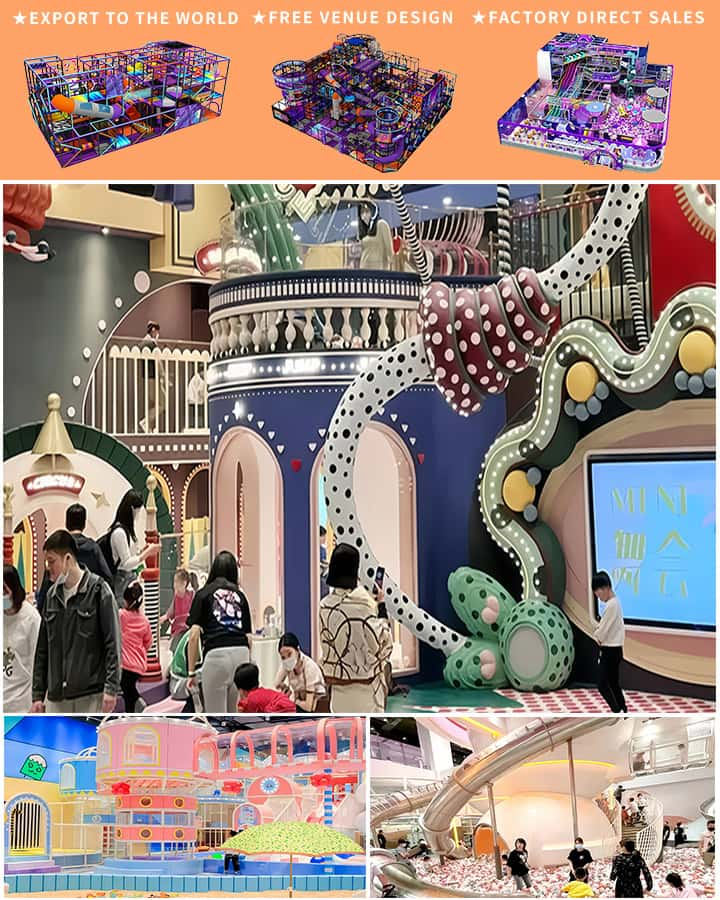When planning to set up an indoor playground, one of the most crucial aspects to consider is the cost of indoor playground equipment. This investment significantly influences not only the initial setup expenses but also the long-term success and sustainability of the business. Understanding the various elements affecting these costs can help you make informed decisions and ensure a positive return on your investment.
Factors Affecting the Cost of Indoor Playground Equipment
- Type of Equipment
- Soft Play Areas: These typically include foam blocks, ball pits, and climbing structures. Soft play areas are often more affordable and can range from $500 to several thousand dollars depending on size and complexity.
- Trampolines: Trampolines for indoor use vary in price based on size, quality, and brand. Small units might start around \(200, while larger, commercial-grade trampolines can exceed \)2,000.
- Interactive Equipment: Items such as interactive games, slides with digital features, or sensory play areas tend to be pricier due to advanced technology integration. Expect to pay from \(1,000 to over \)5,000 per piece.
- Adventure Structures: Multi-level play structures that offer climbing, sliding, and crawling opportunities can range anywhere from \(3,000 to \)20,000 based on design and materials used.

- Quality and Durability
- High-quality indoor playground equipment made from durable materials like non-toxic plastics, reinforced steel frames, and high-density foam will naturally come with higher upfront costs but provide better safety standards and longer lifespan, reducing replacement expenses over time.
- Customization and Branding
- Customized equipment tailored to match the theme of your indoor playground or incorporating unique branding elements can add to the overall cost. Custom pieces are often priced higher than standard off-the-shelf options but can enhance the attraction’s identity and appeal.
- Installation and Shipping Costs
- Don’t forget to account for installation fees and shipping charges, which can vary widely. Professional installation ensures safety compliance but may add a significant sum to your budget. Some suppliers offer free or discounted installation services with large orders.
- Maintenance and Safety Standards
- Investing in equipment that meets stringent safety standards (e.g., ASTM or EN certification) is essential for liability reasons and peace of mind. While these items may have a higher initial cost, they minimize risks associated with accidents and injuries.
Budgeting Tips for Indoor Playground Owners
Prioritize Needs Over Wants: Start by identifying essential equipment that aligns with your primary age group and concept. You can always expand or upgrade later as your budget allows.
Research Suppliers Thoroughly: Obtain quotes from multiple suppliers and compare their offerings in terms of quality, warranty, after-sales service, and delivery times.
Consider Second-Hand Options: If new equipment stretches your finances too thin, explore pre-owned equipment from reputable sellers. Ensure they are still compliant with current safety regulations.
Lease Instead of Buying: For those hesitant about committing to large purchases, leasing equipment could be a viable short-term solution. It provides flexibility without tying up capital.
In conclusion, the cost of indoor playground equipment varies greatly based on factors like type, quality, customization, installation, and safety standards. By carefully evaluating these elements and considering your specific needs and budget, you can create a fun, safe, and financially sustainable indoor playground experience for children and families alike.




